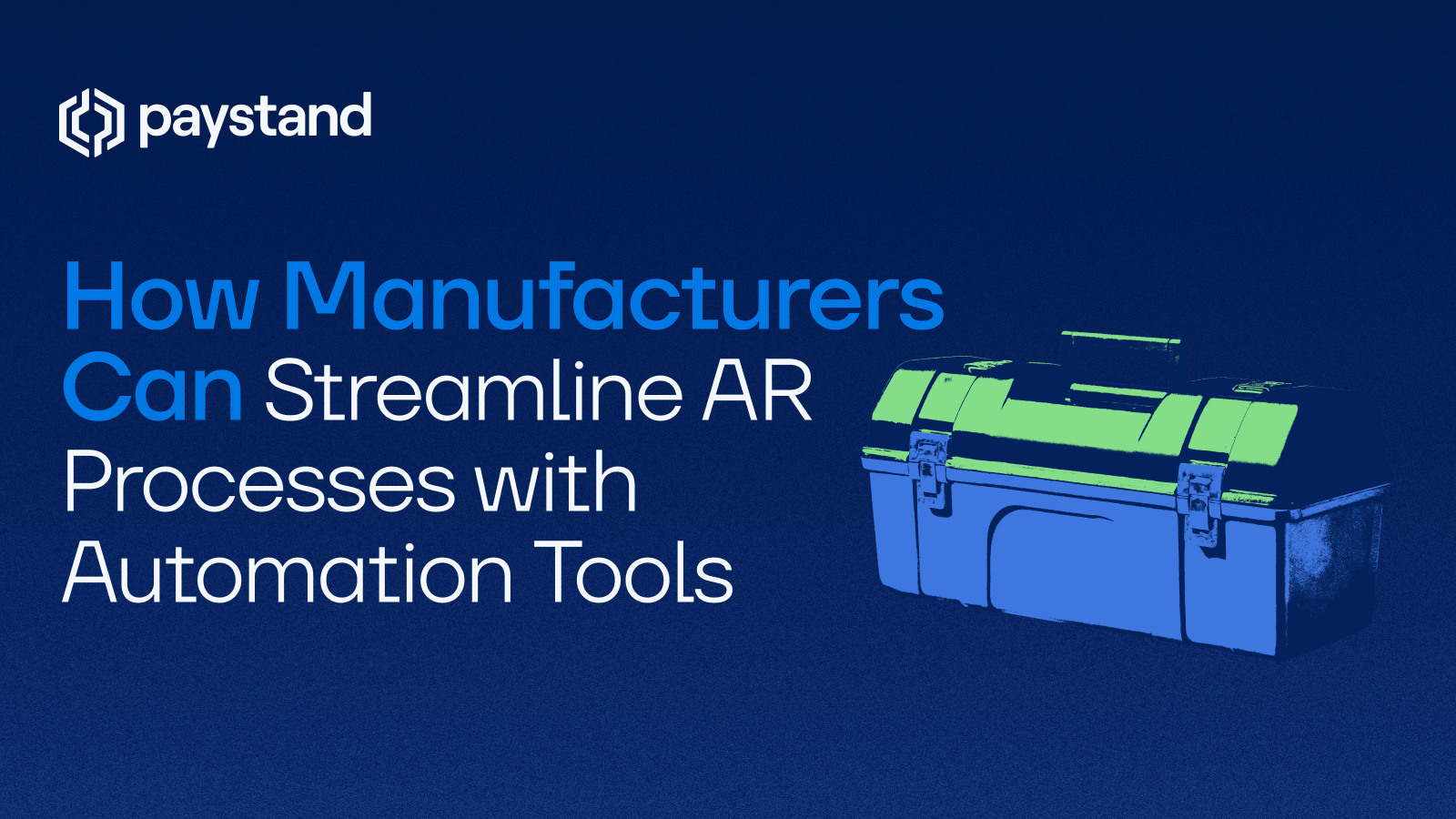How Manufacturers Can Streamline AR Processes with Automation Tools

Table of Contents
- Best Accounts Receivable Automation Solutions for Manufacturing
- How to Evaluate and Implement AR Automation in Manufacturing
- ERP Integration with AR Automation Tools
- Features Manufacturing Companies Should Prioritize
- Aligning AR Around Customers
Key Takeaways
- AR automation reduces human error, eliminates manual intervention, and speeds up collections.
- Integration with ERP systems provides real-time visibility, improves consistency, and enhances working capital management.
- Manufacturers should prioritize features like cash application automation, flexible payment options, and AI-powered insights.
- Automation tools empower finance teams to shift focus from time-consuming tasks to strategic decision-making.
- Aligning AR processes around customer experience leads to better relationships and long-term business stability.
Manufacturers today face increasing pressure to speed up collections, improve customer relationships, and manage cash flow efficiently. Manual intervention in the invoicing process and payment collection not only leads to human error but also consumes valuable time for finance teams. Accounts receivable (AR) automation provides manufacturers with automated solutions that streamline AR processes, reduce days sales outstanding (DSO), and improve working capital management. This guide explores the best practices, tools, and features that manufacturing firms should consider when implementing AR automation.
Best Accounts Receivable Automation Solutions for Manufacturing
Manufacturing companies typically deal with complex payment processes, multiple customer accounts, and diverse invoicing requirements. The best AR automation tools for this industry focus on:
- Automating invoicing processes to eliminate manual errors and reduce disputes.
- Cash application automation
to match customer payments against open invoices seamlessly. - Providing real-time visibility into payment behavior, enabling proactive collection strategies.
- Reducing errors by removing time-consuming manual processes and replacing them with automated solutions.
Popular solutions are designed to integrate with manufacturing workflows, ensuring that AR processes align with production and customer delivery schedules.
How to Evaluate and Implement AR Automation in Manufacturing
To achieve long-term benefits like improved cash flow and reduced DSO, manufacturing firms should follow a structured evaluation process:
- Assess Current AR Processes – Identify where manual intervention creates inefficiencies, delays, or errors.
- Prioritize Key Outcomes – Define goals such as faster customer payments, improved working capital, and fewer disputes.
- Select Automation Tools – Look for solutions that provide real-time visibility into AR processes and reduce dependency on manual workflows.
- Pilot and Integrate – Begin with a controlled rollout, ensuring finance teams adapt smoothly before scaling.
- Measure Impact – Track metrics like DSO reduction, payment behavior improvements, and dispute frequency.
For more ideas, check out our blog on Accounts Receivable Process Improvement Ideas.
ERP Integration with AR Automation Tools
One of the most significant benefits for manufacturers working towards accounts receivable digital transformation is seamless ERP integration. AR automation software needs to integrate directly with popular ERP systems used across the industry, like NetSuite, Sage, and Microsoft Dynamics. These integrations ensure:
- Real-time syncing of invoices, payments, and cash application data.
- Consistency across finance teams, production, and customer service.
- Improved visibility into working capital, supporting better financial decision-making.
Features Manufacturing Companies Should Prioritize
When selecting AR automation tools, manufacturers should focus on features that directly address industry-specific challenges:
- Automation of repetitive AR processes to free finance teams from time-consuming tasks.
- Real-time dashboards provide visibility into customer payments, disputes, and payment behavior.
- Flexible payment options, including ACH and credit card, to improve the customer experience.
- AI-powered accounting insights to predict late payments, reduce errors, and enhance customer relationships.
- Self-service payment portals
that leverage AI payment processing to empower customers, improve relationships, and reduce friction.
By focusing on these features, manufacturing businesses can significantly enhance efficiency and align AR processes with customer needs.
Aligning AR Around Customers
For manufacturers, AR automation is more than just reducing manual intervention—it’s about aligning AR processes around customer experience and long-term financial stability. By leveraging automated solutions, manufacturers can reduce errors, speed up collections, improve cash flow, and strengthen customer relationships. Finance teams gain real-time visibility into payment behavior, allowing them to make better decisions and prevent unnecessary disputes.
To dive deeper into how AR automation can transform your manufacturing operations, we invite you to read our free ebook: Top 5 Manufacturing Services Industry Payment Solutions.
For further resources, explore our insights on Accounts Receivable Management.






%20(1)%20(1).jpg?width=100&height=100&name=IMG_3752%20(1)%20(1)%20(1).jpg)